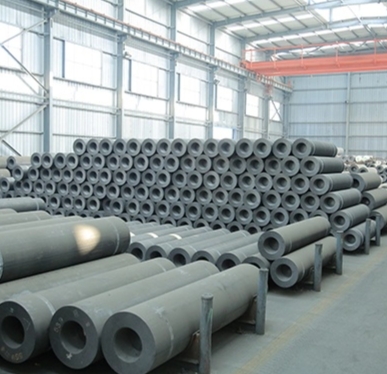
In industrial applications such as electric arc steelmaking or other smelting operations, graphite electrodes play an important role. They are inert and resistant to corrosion. They also maintain a constant temperature on their surface. They are also able to provide excellent conducting properties in the extreme temperatures of these industrial applications. The quality and durability of the electrodes makes them a better choice than metal electrodes in these applications.
The primary purpose of graphite electrodes in steelmaking is heating the molten metal in an electric-arc furnace (EAF). Electrodes deliver electricity into the steel molten state and melt the steel into the desired shape for casting. Due to high current densities, they are highly conductive and can transfer energy to the steel molten with minimal heat losses.
Graphite electrodes are also extremely durable and can even be reused several times. This results in less waste during the steelmaking process, and a reduced environmental impact. This is made possible by the fact that they are machinable, meaning they can be cut and shaped to fit the required steelmaking process. This allows for the use of more powerful and larger machines to produce steel, reducing overall emissions.

Graphite electrodes also last longer than their metal counterparts due to their durability and resistance to rust. The ability of an electrolyte to withstand thermal and mechanical shock is usually what determines its life. This is vital because the erosion of an electrode will affect the performance of the smelting, machining or other operations.
As the industry continues its expansion, the need to produce electrodes with higher performance and lower cost is becoming increasingly apparent. This led to the creation of graphite electrode enhancer additives like Hexagon’s Performance+. Hexagon Performance+ adds natural and synthetic graphite together to create a high performing product with exceptional real/true and electrical conductivity. This is achieved through a controlled process of screening, blending and mixing with coal tar pitch to form a dense paste that is then extruded into elongated electrodes for use in the steelmaking process.
The production process of graphite electrodes is much more cost-effective and uses fewer resources. This leads to a significant reduction in the carbon footprint of the steelmaking industry. Graphite is also a nontoxic and environmentally friendly material that reduces the environmental impact.
Graphite excels at these high-demand parameters, unlike copper. This allows for higher cutting speeds and metallurgical conditions without compromising electrode longevity. The range of grades available in graphite and the machinability options allow for easy selection of the material specification that is best suited to each job. This ensures maximum performance and minimizes cost in terms of electrode usage or frequent redressing. For these reasons, the industry has come to rely on graphite electrodes for all their high-performance machining and smelting needs.

Write a Message